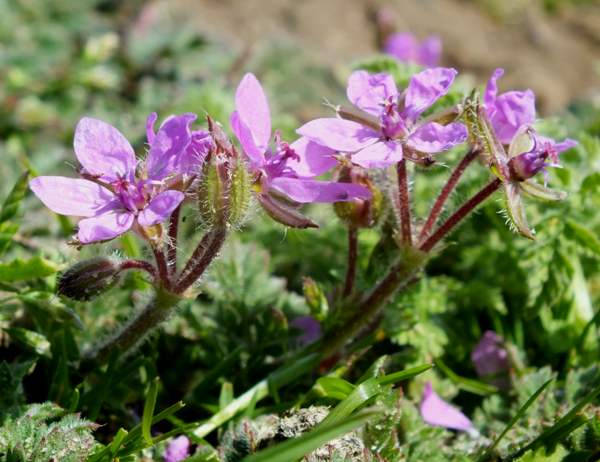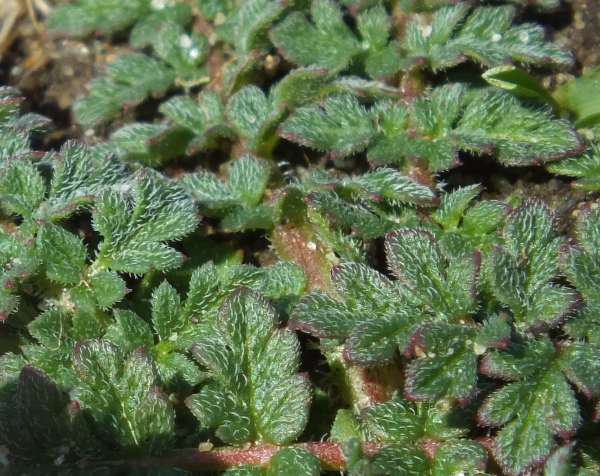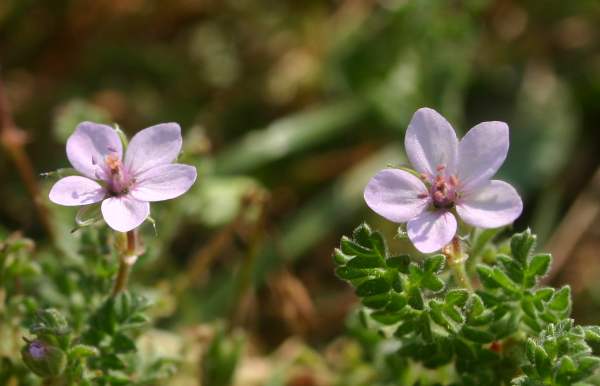Erodium cicutarium - Common Stork's-bill
Phylum: Magnoliophyta - Class: Equisetopsida - Order: Geraniales - Family: Geraniaceae

Description
Common Stork's-bill is very variable in appearance but this branching hairy annual has leaves that are divided into paired deeply-lobed leaflets. The five-petalled pinkish-mauve to pale purple flowers, typically 10 to 18mm across, grow in loose, long-stalked clusters of 2 to 12. (We find them with clusters of three flowers more often than anything else.)
The flowers are followed by a fruit with an elongated 'beak' - the 'stork's bill' - which splits into five segments when ripe.

Habitat
This wildflower favours dry, grassy places and wasteland, especially on chalk; it is also found on coastal dunes (as in the photograph above).

The common name stork's-bill refers to the sharp, beak-like shape of the seeds, which appear once the flowers have died back.
Please Help Us: If you have found this information interesting and useful, please consider helping to keep First Nature online by making a small donation towards the web hosting and internet costs.
Any donations over and above the essential running costs will help support the conservation work of Plantlife, the Rivers Trust and charitable botanic gardens - as do author royalties and publisher proceeds from books by Pat and Sue.



